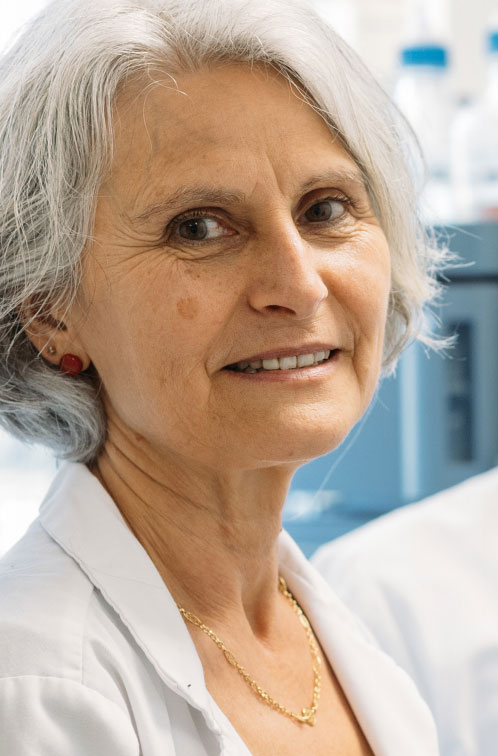About Conference
Join us at the 34th Experts Meet on Cancer Research & Therapy, taking place on December 11-12, 2024, in the heart of Paris, France. This prestigious conference is a premier gathering for oncologists, researchers, medical professionals, and industry leaders dedicated to advancing the field of cancer research and therapy. Attendees will have the opportunity to engage with cutting-edge research, participate in interactive workshops, and network with leading experts from around the world. The event will feature inspiring keynote speakers, accredited educational sessions, and an exhibition of the latest innovations in oncology. Don’t miss the chance to be part of this influential event in the vibrant and historic city of Paris. Register now to secure your place at the forefront of cancer research and therapy. The conference is expected to attract a large number of researchers, healthcare professionals, oncologists, and industry experts from around the world.
Conference Highlights
The conference will feature a range of keynote speeches, panel discussions, and interactive sessions led by some of the leading experts in the field of oncology. Topics will include:
-
Latest advances in cancer research
-
Emerging therapies
-
Clinical trials
-
Cancer prevention and screening
-
Patient care and support
Networking Opportunities
Attendees will have the opportunity to network with fellow professionals and learn about the latest technologies and innovations in cancer diagnosis and treatment. The conference will also provide a poster session where researchers can present their latest findings and engage in discussions with attendees.
Why Should Attend
The 34th Experts Meet on Cancer Research & Therapy, themed “Innovations and Integrations: Advancing Cancer Research and Treatment for a Global Impact” addresses the escalating global challenge of cancer. As cancer cases rise and the disease becomes increasingly complex, the need for groundbreaking research and novel treatments is critical. This premier conference offers a unique platform for researchers, clinicians, and healthcare professionals to unite and tackle the multifaceted challenges of cancer. Attendees will benefit from a diverse program featuring keynote addresses, plenary sessions, and interactive workshops on cutting-edge topics such as advanced therapeutic techniques, the latest diagnostic technologies, and strategies for cancer prevention and management.
The event also emphasizes networking and collaboration, providing opportunities to connect with peers, share insights, and discuss best practices in cancer research and therapy. Participants will gain exposure to pioneering developments in the field, including advancements in artificial intelligence, precision medicine, and genomics, all aimed at enhancing our understanding and treatment of cancer.
Join us at the 34th Experts Meet to be at the forefront of cancer research and therapy, engage with leading experts, and contribute to shaping the future of cancer care.
Who Should Attend
34th Experts Meet on Cancer Research & Therapy will be useful to participants from both the industry and academia working in all domains of healthcare sectors. Target audience includes:
-
Researchers
-
Scientists
-
Healthcare experts
-
Epidemiologists
-
Physicians
-
Nurse practitioners
-
Healthcare analysts
-
Business delegates
-
Young researchers
-
Advertising and promotion agency executives
-
Professionals in the media sector
-
Professors
-
Surgeons
-
Fellowship holders
-
Surgical technicians
-
Anesthesiologists
-
Medical students
-
Healthcare and pharmaceutical companies
Scientific Sessions/ Tracks
Sessions and Tracks:
1) Precision Medicine and Personalized Therapies
Precision medicine and personalized therapies in cancer involve tailoring treatments based on a patient’s unique genetic, environmental, and lifestyle factors. By analyzing genetic mutations and biomarkers, these approaches enable targeted therapies and adaptive treatment plans, aiming to improve efficacy and minimize side effects.
2) Translational Research and Clinical Applications
Translational research accelerates the process of turning lab discoveries into real-world cancer treatments by conducting clinical trials and developing biomarkers. This approach ensures that new therapies are effectively tested and refined, bridging the gap between scientific research and patient care.
3) Anti-cancer Drug Discovery
Anti-cancer drug discovery involves identifying and developing novel compounds that specifically target cancer cells or their supporting mechanisms. This process includes high-throughput screening, understanding drug mechanisms, and advancing promising candidates through rigorous preclinical and clinical testing to ensure they effectively treat cancer with minimal side effects.
4) Cancer Diagnostics and Emerging Technologies
Cancer diagnostics and emerging technologies leverage innovations such as liquid biopsies, advanced imaging techniques, and AI-driven analyses to improve early detection and precise diagnosis. These advancements enhance the ability to monitor tumor dynamics, tailor treatments, and ultimately improve patient outcomes through more personalized and timely interventions.
5) Cancer screening
Cancer screening aims to identify cancer at an early, more treatable stage in asymptomatic individuals using methods like mammograms, colonoscopies, and low-dose CT scans. Early detection through screening improves the likelihood of successful treatment and survival by catching cancers before they progress.
6) Treatment of Cancer
Cancer treatment involves a combination of therapies such as surgery, radiation, chemotherapy, targeted therapy, and immunotherapy. The choice of treatment depends on the cancer type, stage, and individual patient factors, aiming to eliminate cancer cells while minimizing harm to healthy tissue.
7) Cancer Prevention and Early Detection
Cancer prevention and early detection combine lifestyle modifications, preventive vaccinations, and cutting-edge screening techniques to reduce risk and identify cancer at its most manageable stage. This proactive approach enhances the ability to intercept cancer early, optimizing treatment outcomes and improving survival rates.
8) Advanced Therapies in Cancer
Advanced therapies in cancer, including targeted therapies, immunotherapy, and CAR-T cell therapy, harness cutting-edge technologies to precisely attack cancer cells while sparing healthy tissue. These innovative treatments offer personalized approaches, significantly improving efficacy and minimizing side effects.
9) Cancer Genomics and Epigenetics
Cancer genomics and epigenetics examine genetic mutations and epigenetic changes that influence tumor development and progression. This research enables the creation of targeted therapies and personalized treatment strategies by revealing how these molecular alterations drive cancer, leading to more effective and tailored therapeutic options.
10) Gynecologic Cancer Prevention and Control
Gynecologic cancer prevention and control blend proactive measures such as HPV vaccination, strategic screenings, and tailored lifestyle adjustments to combat cancers like cervical, ovarian, and endometrial. This multifaceted approach not only reduces risk but also empowers early detection and targeted intervention, enhancing overall care and outcomes.
11) Cancer Immunology
Gynecologic cancer immunology delves into the intricate dance between the immune system and cancers such as cervical, ovarian, and endometrial. By unraveling these complex interactions, researchers aim to craft innovative immunotherapies that bolster the body's innate ability to seek out and destroy cancer cells, offering a cutting-edge approach to treatment.
12) Cancer Vaccines
Cancer vaccines are designed to activate the immune system to recognize and combat cancer cells. Preventive vaccines, such as the HPV vaccine, protect against virus-induced cancers, while therapeutic vaccines stimulate an immune response against existing tumors. These innovative approaches aim to reduce cancer incidence and improve treatment outcomes by leveraging the body's natural defense mechanisms.
13) Drug Resistance and Overcoming Challenges
Drug resistance in cancer occurs when cancer cells adapt to evade the effects of treatment, complicating therapy. Overcoming this challenge involves strategies like combination therapies, which use multiple drugs to target different pathways, and personalized medicine, which tailors treatments based on the genetic makeup of the tumor, aiming to outmaneuver resistance mechanisms and improve patient outcomes.
14) Ethical and Regulatory Issues in Cancer Research
Ethical and regulatory issues in cancer research focus on securing informed patient consent, protecting data confidentiality, and ensuring fair access to experimental treatments. Adhering to these principles is vital for ethical integrity, maintaining trust, and facilitating the responsible development of new cancer therapies.
15) Cancer Genomics & Metabolomics
Cancer genomics and metabolomics analyze genetic mutations and metabolic changes in tumors to guide personalized treatment. By mapping these alterations, researchers can develop targeted therapies and refine treatment strategies to more effectively combat cancer based on its unique molecular profile.
16) Innovations in Cancer Data and Informatics
Innovations in cancer data and informatics leverage advanced technologies, such as artificial intelligence and big data analytics, to improve cancer research and therapy. These tools enhance data integration, uncover patterns, and drive personalized treatment strategies, optimizing outcomes through more precise and informed decision-making.
17) Cell-Based Therapy
Cell-based therapy involves using modified or engineered cells, such as CAR-T cells, to target and kill cancer cells with high specificity. By reprogramming immune cells or introducing new cell types, this innovative approach aims to enhance the body’s natural ability to fight cancer, leading to more effective and personalized treatment options.
18) Advancement in the Field of Cancer
Advancements in cancer research and therapy include breakthroughs in targeted treatments, immunotherapy, and precision medicine, which personalize care based on genetic and molecular profiles. These innovations are improving early detection, treatment efficacy, and patient outcomes by addressing the complexities of cancer more effectively.
19) Advances in Supportive Care and Symptom Management
Advances in supportive care and symptom management focus on improving the quality of life for cancer patients through innovative approaches like targeted pain relief, nutritional support, and psychological care. These advancements aim to alleviate treatment side effects, manage symptoms effectively, and provide holistic support throughout the cancer journey.
20) Role of Microbiome in Cancer
The microbiome's role in cancer research explores how gut and body bacteria influence tumor development, treatment response, and immune system interactions. Understanding these microbial impacts can lead to new therapeutic strategies and enhance the effectiveness of existing cancer treatments.
Market Analysis
The 34th Experts Meet on Cancer Research & Therapy, with the theme "Advancing Cancer Care: To Combat Cancer and Achieve a Cancer-Free World," is expected to attract a large number of participants from the healthcare industry, research institutions, academia, and government organizations. The Congress will provide an opportunity for participants to learn about the latest advancements in cancer research and diagnostics, and to network with experts in the field.
Market Size
The global cancer diagnostics market was valued at USD 157.6 billion in 2020 and is expected to grow at a CAGR of 7.5% from 2021 to 2028. The market growth is driven by the increasing prevalence of cancer, the emergence of novel diagnostic technologies, and the growing adoption of targeted therapies.
Market Segmentation
The cancer diagnostics market is segmented by type of test, application, and region. Imaging tests, biopsy, blood tests, and genetic tests are the most common types of cancer tests. Applications include breast cancer, lung cancer, colorectal cancer, prostate cancer, and others.
Regional Analysis
North America holds the largest share of the global cancer diagnostics market, followed by Europe, Asia Pacific, and the Rest of the World. The high prevalence of cancer in North America, coupled with the presence of leading cancer research institutions and healthcare facilities, makes it a major market for cancer diagnostics.
Market Trends
The growing use of precision medicine and personalized cancer treatments is expected to drive the growth of the cancer diagnostics market. This trend is expected to continue as more research is conducted on the genetic and molecular mechanisms of cancer. Additionally, the adoption of artificial intelligence and machine learning technologies is expected to revolutionize cancer diagnostics by enabling faster and more accurate diagnosis and treatment.
Market Opportunity
The 34th Experts Meet On Cancer Research & Therapy presents a significant opportunity for participants to showcase their latest research and technologies in cancer diagnostics. The conference will provide a platform for participants to network with leading experts in the field, learn about the latest trends and advancements in cancer diagnostics, and explore new business opportunities.




